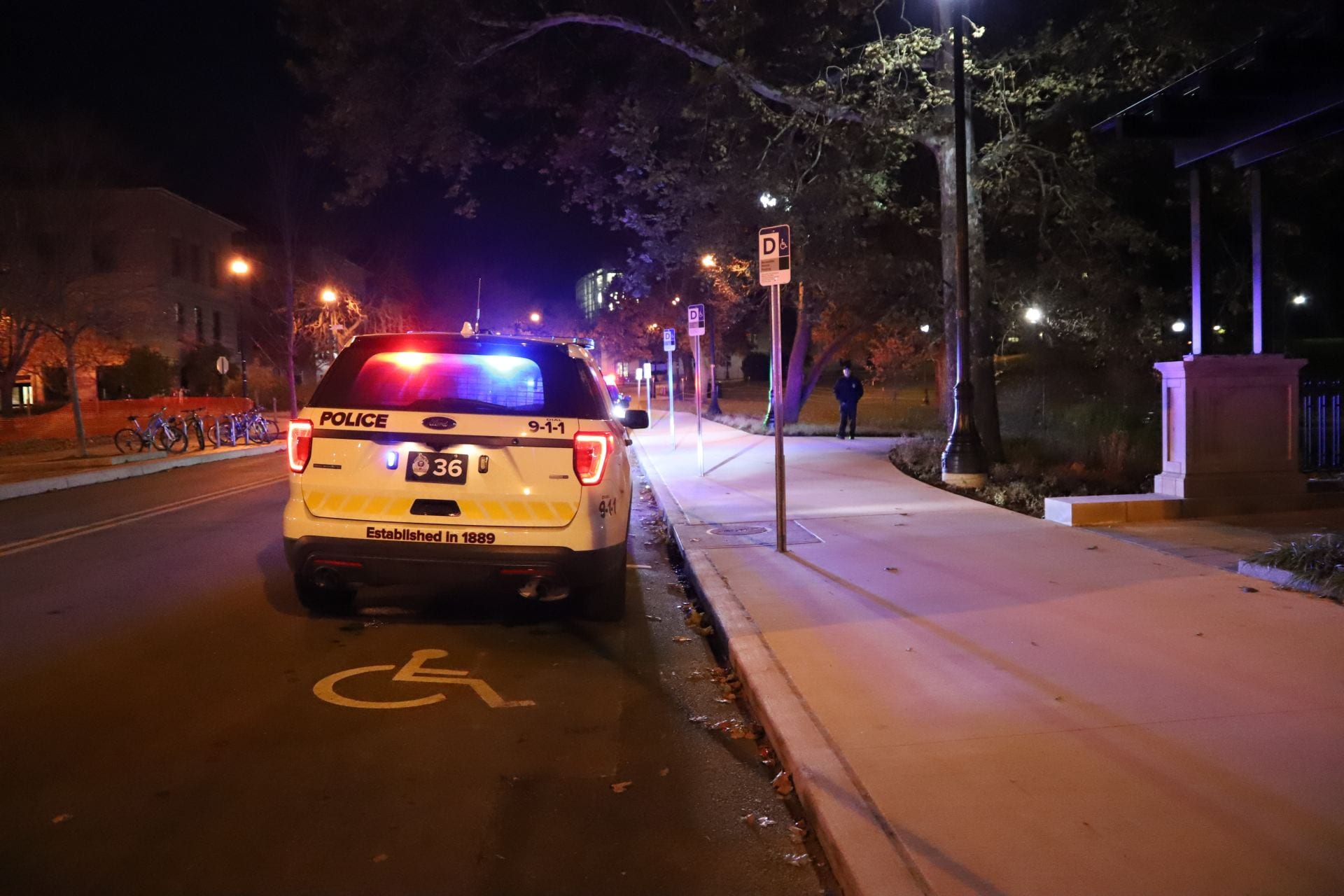Fred Beekman Park will be a little smaller when students return to campus this fall.
A portion of the park adjacent to Pressey Hall has been designated as the site of a new $1.5 million bioresearch facility scheduled to begin construction later this summer.
University architect Steve Middleton said the facility will consist of a modular building assembled off-site then installed in the park.
The project should be complete within two or three months after construction starts, he said.
Cecil Smith, of the Office of Environmental Health & Safety, said the new building will hold a Level 3 containment facility for research involving tuberculosis and other “Category A” agents that may be associated with bioterrorism.
According to the Center for Disease Control’s Web site, pathogens are designated as Category A agents if they “can be easily disseminated or transmitted from person to person; result in high mortality rates and have the potential for major public health impact; might cause public panic and social disruption; and require special action for public health preparedness.”
Category A agents include anthrax, botulism, plague, smallpox, tularemia and viral hemorrhagic fevers such as ebola.
Other than tuberculosis, Smith could not specifically identify which pathogens will be studied in the new facility because of legal and security issues related to bioterrorism research. However, he said viral hemorrhagic fevers and smallpox will not be among the agents studied in the new facility.
Level 3 refers to the safety standards that must be taken to handle particular types of pathogens. According to OSU’s Institutional Laboratory Biosafety Manual, airborne pathogens that may cause serious or lethal disease in humans are assigned to Biosafety Level 3.
Smith is not concerned the facility will represent any health threat to park users because of the stringent controls that are mandated by the federal government for Level 3 containment facilities.
“The building will be inspected by the CDC and possibly the USDA,” he said.
Two levels of security are built into the facility. The research will be done inside biological safety cabinets that are designed to contain pathogens. Smith said additional precautions are built into the facility itself.
“Air goes through special filtration devices. It’s treated when it leaves the cabinets and when it leaves the building. That’s required,” he said.
In addition, a fence will be erected around the building’s perimeter, and security clearance will be required for personnel to enter the building, Smith said.
Smith was positive about the benefits this facility can provide to the university community.
“The types of research done here may lead to vaccines for infectious diseases. Researchers will study how the disease process works and how it can be prevented,” Smith said.
According to the CDC publication “Questions and Answers about Tuberculosis,” TB is an infectious disease caused by bacteria that attacks the lungs. If left untreated, the disease can move into the kidneys, spine and brain.
TB nearly disappeared in the United States in the 1940s but has since reappeared. Sixteen thousand cases of the disease were reported in 2000.
The project may also provide financial benefits to the university. The money coming in “supports activities for the whole university community,” Smith said.
The benefits were not so obvious to the Director of Recreational Sports, Mike Dunn, when he first heard a portion of the park would be appropriated for the facility.
Dunn, also a member of the University Recreational Sports Council, heard about the project informally when someone told him surveying was being done on a hillside in the park.
“Normally, the Space Facilities Committee would call and ask for input from URSC. That did not happen. It was frustrating that we hadn’t been told in an official capacity,” he said.
Loss of recreation space in the park was an important concern for Dunn. He said the hillside is frequently used by the university community for picnics, observation of sporting events in the park, and simply laying out in the sun. It is also a popular place for sledding in the winter.
“Two thousand people use the park every day during the school year,” he said.
Dunn contacted university architect Jill Morelli to ask about the proposed facility. Dunn said he was told the university had looked at other sites for the project, but settled on the park because of its proximity to Pressey Hall.
When asked why the facility would be built in the park, Smith said research animals are housed in Pressey Hall and it was important to facilitate transportation of animals to the new facility.
“We spent a lot of time deliberating this issue,” Smith said.
Middleton worked with URSC to alleviate concerns about the facility, including the important issue of park safety.
The original plans for the facility included a wall and shrubbery near the jogging path that Dunn felt might represent a hazard for park users.
“We particularly designed the Beekman Park path so there weren’t any obstructions – nowhere for people to hide and jump out,” Dunn said.
After meeting with URSC, Dunn said Middleton “developed a better sense of how the space was used.”
Middleton said the perimeter walls and landscaping have been altered because of the concerns raised by URSC.
“Those things have been addressed and the final plans will reflect that,” he said.
Dunn was also reassured by a conversation with Smith.
“When Cecil says it’s going to be a safe site, that aspect of our questioning went away altogether,” he said.


